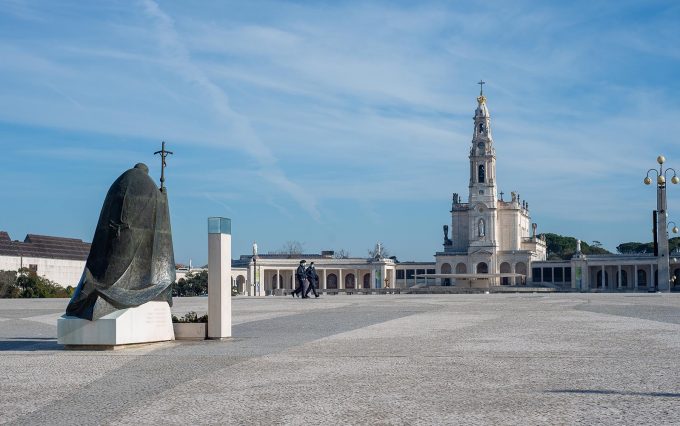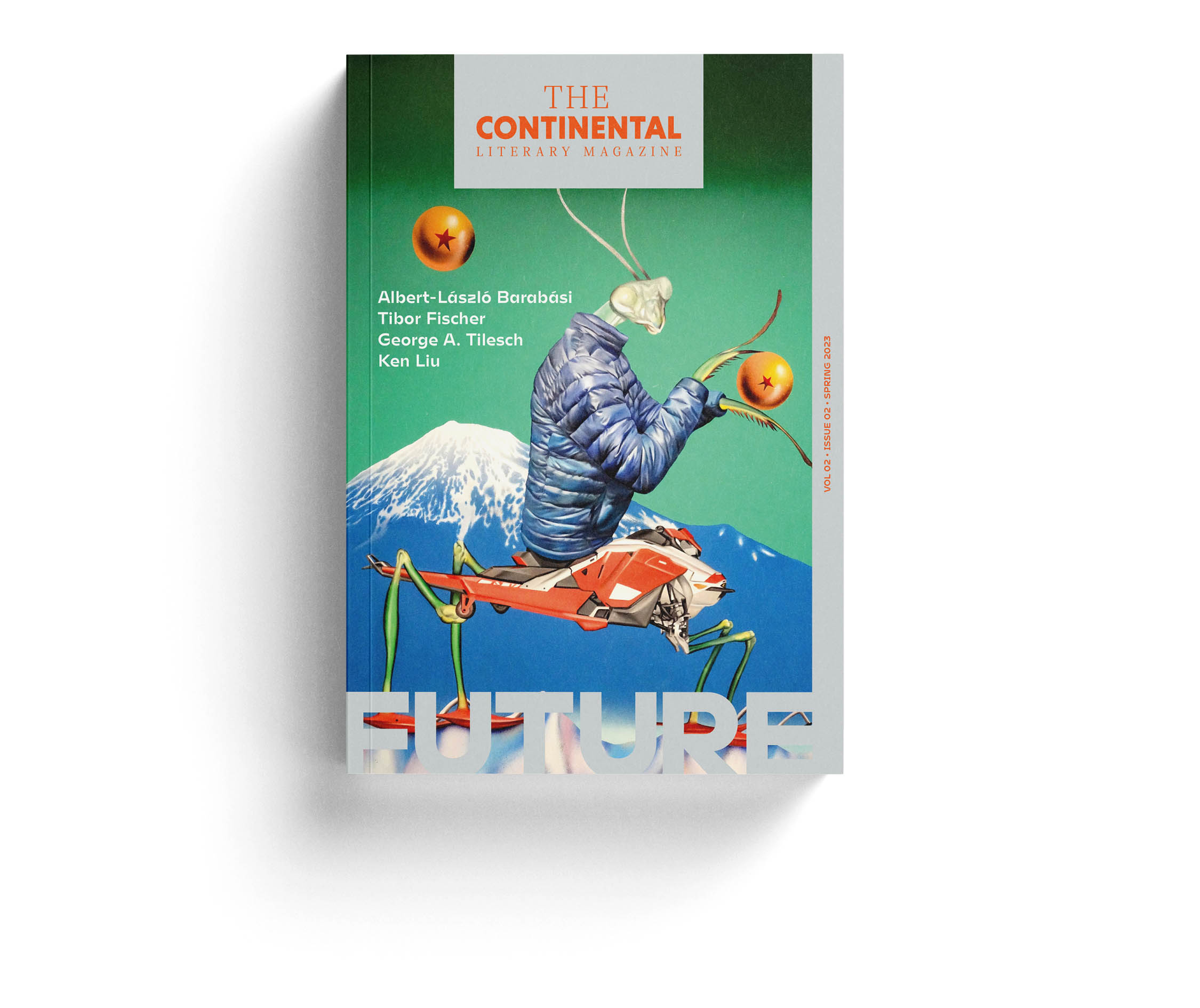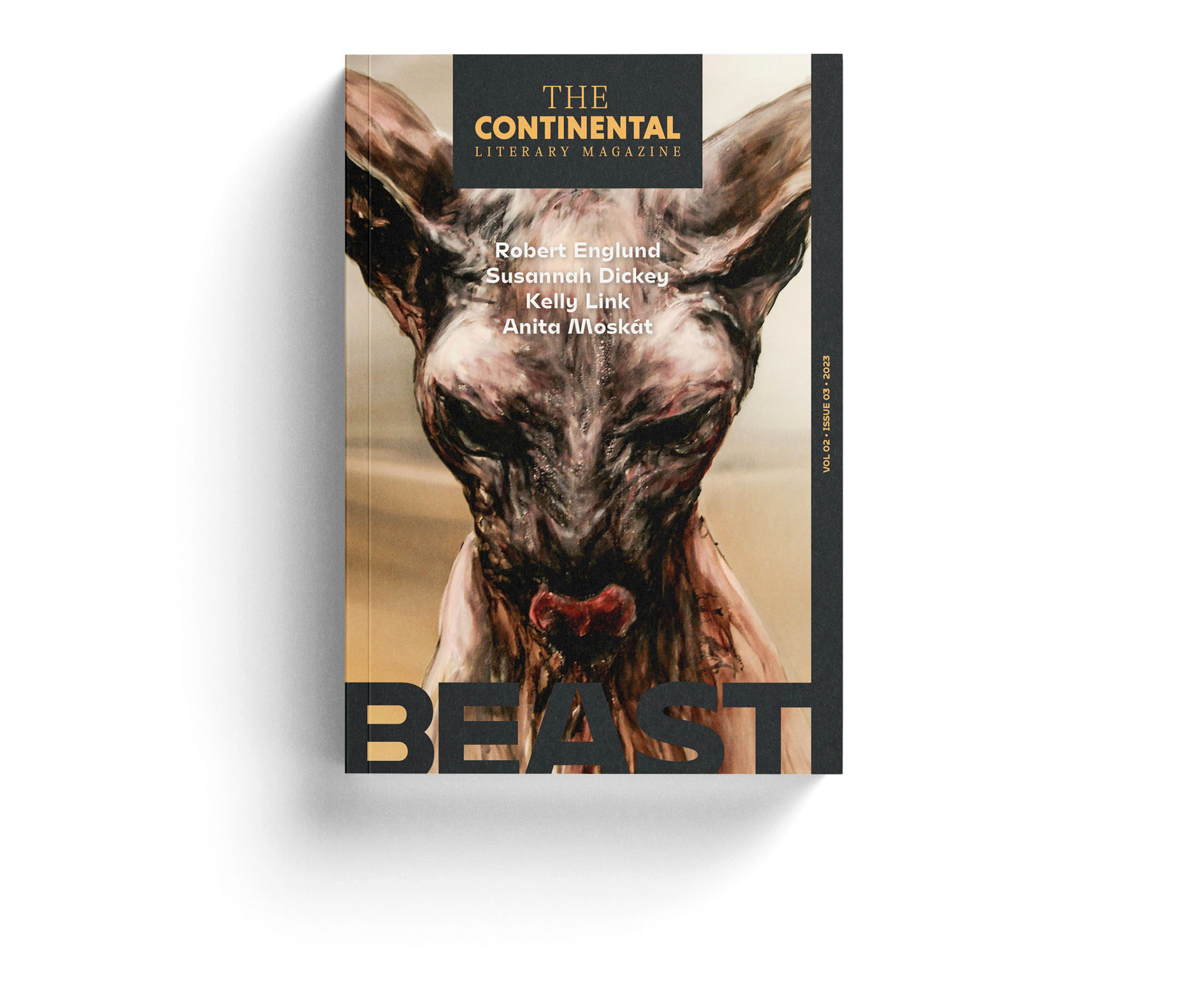
23rd June 2022
Non-Fiction
14 minutes read
Faith as True and Constructive Knowledge
translated by Paul Sohar

23rd June 2022
14 minutes read
“Now faith is the assurance of things hoped for, conviction of things not seen.”
Letters of Paul to the Hebrews, Chapter 11 Verse 1.
“Faith means that one believes what one does not yet see. The reward of faith is that one will see what one believes.”
St. Augustine
“Faith demands a great deal because it takes us beyond ourselves. Faith gives us the power to envision the purpose of life and it urges us to action.”
Pope St. John Paul II.
“People never used to believe in as many things as they do now when they believe in nothing.”
Modern-day proverb.
“If a family had a prayerful grandma,” my mother used to say, “or a prayerful grandpa, brother, or aunt, then they had the men returned to them from the war.”
We had every reason to believe her because her life in Hungary and its much-battered capital, Budapest, spanned almost the entire twentieth century. She lived through both World Wars, the Spanish flu, and two or three revolutions—whatever they were called at the time. She experienced Trianon, the Paris Peace treaty that deprived her grandparents of their birthplace, and several dictatorships, political upheavals, cultural transformations, confiscation of private businesses, and re-privatizations, not as an outside observer but a victim, a victim with a sensitive heart and a mind capable of learning. She too, was a prayerful woman, and she had a chance to learn that where there is faith, there are miracles.
Contrary to popular belief, it is not that miracles engender faith, but rather that faith conjures up miracles.
Without faith there are no miracles, only accidents, only “good luck.”
Even a nonbeliever can recognize when he is fortunate, when something good happens to him without full input on his part. But he attributes the lucky outcome to having been in the right place at the right time, that it was a “fluke”. In contrast, we call the God-fearing person the believer who sees God’s hand in good things that happen. Believers recognize the Creator in God and believe that God did not only create them but, according to tradition, maintains a close relationship with them. God created people to be cognizant of truth.
God plays no favorites. God rewards with miracles not only the believers but the nonbelievers too. The difference is that, with the help of faith, believers can hear the guidance we all receive. Indeed, we all get good advice and helpful suggestions from God, who keeps an eye not only on his immediate surroundings but the whole universe. The sum total of sciences, what the best scientific mind can comprehend, is only a mere fraction of what is taking place around us and forming our environment, the course of life. The creator of the world though can see it in every detail and understands it purpose. This thought is what our faith should enable us to accept whenever we sense coming closer to the fountain of miracles, the “good luck.”. Science calls this phenomenon intuition, intuitive discovery, but it attributes the fountain of intuition to a special function of the brain, sidestepping the possibility of spiritual influences.
In February of 2022, a small group of believers took off on a pilgrimage to the famous West European holy sites. Arriving in Lourdes, they were shocked to see that the sanctuary where Mary had appeared, where for two hundred years pilgrims by the thousands had experienced miraculous cures, conversions, and given testimonies, a place that had always been crowded by worshippers, was now completely empty. They were alone praying in this famous cavern, right next to the magnificent cathedral erected in memory of the appearances and miracles, as if they were the sole representatives of humanity on an unknown planet.
Continuing their pilgrimage, they visited Avila, Fatima, Lisbon, and Tours, following in the footsteps of Saint Teresa and Saint Martin, always trying to find the footprints left by the great European figures of Catholic faith and mysticism, only to be greeted by depressing sights of emptiness. In the place of believers engaged in inspirational choral singing, communal prayers, and daily procession, they found depopulated, vacant city squares and darkened cathedrals full of beautiful votive items but no believers.
This is how they came to understand—and with them, all of us who kept ourselves informed of their progress—the true magnitude of the devastating plague of the past two years. .
The pandemic has deprived the people of Europe of the opportunity to pray together and thereby amplify one another’s faith; thus it is no wonder that things are going awry.
That a war is raging in the middle of a continent that has lived in peace for decades clearly foreshadows the possibility that from now on rockets carrying destructive loads will play a decisive role in the shaping of our future.
“Peace, I live with you; my peace I give to you; not as the world gives. Let not your heart be troubled,” said Jesus on the eve of his crucifixion. (John 14:27) And we could all ascertain what Christ-like peace was like anywhere in the world where multitudes of believers gathered to praise God and pray to him. For example, in Fatima, in the enormous square built on the site of the famous earlier appearances of Mary, whether in bright daylight or in late evening hours, when we participated in a holy mass, a holy procession, saying the prayers of the rosary together or singing psalm. The pews as well as the open space of stone slabs covered with blankets were filled with people from different countries, speaking many different tongues, all pilgrims, some young, some old, married couples, families, little children snoozing with smiles on their faces. There was never an inappropriate word, an indifferent or hostile face, or an unloving gesture. Everyone was happy to be part of this peace that had its roots in God and spread all over the plaza. The hours spent in the soulful atmosphere of piety gave all of us an unforgettable experience; even the prayers heard in numerous unknown tongues and the psalms to different tunes seemed to have a healing effect on the soul. They grafted the spiritual feeling into us, telling us that it was good to be a human being, not only good but an honor. In the euphoria of the shared prayer our unshed tears cascaded, and our suppressed smiles opened our faces, and we were able to accept and love the thousand strangers who prayed with us in the same breath.
Now is a good time to wonder how much is contributed to this experience by the magnificent structures decorated by flowers, statues, and paintings, the holy sites preserving the memory of saints? Now that they are empty and depopulated, we realize that while the artistic creations of human effort may elevate the earthly level of the cult, they do not stand for its essence. The most important role is played by human believers; without them there is no life even in the grandest cathedral.
Faith enables us to achieve the proper comprehension of our relationship to reality.
Believers are aware of the fact that human beings cannot know, are incapable of sufficiently knowing, are unable to see the world around them in its totality, neither the present, nor the past, and even less of the future. They do not know the extent of the Universe, the billions and billions of particles that make it up, the unimaginably complex structure comprised of invisible, infinitesimal fragments of matter that may not even be solid but pure energy, all in an intricate correlation, past the undecipherable interplay of time and space far beyond our imagination. Faith is the true and productive emotional condition in which believers, capable of using their minds and controlling their emotions, can understand that their power and possibilities are not limitless because their existence depends on the Creator of the world who is also the proprietor of the universe. Christianity teaches respect for the concept of absolute truth. This is the starting point from which human thinking over the centuries resulted in our current scientific understanding of the world. But as soon as we reject the starting point, the concept of absolute truth, and start assigning relative value to facts, we not only lose the basis of our existence, the basic tenet mechanizing the universe, the public trust so necessary for the functioning of society; not only do we weaken the very foundation of human cooperation, but we deprive science of its own controls. If we no longer possess the basic research principles and methods that would be compatible with the natural world, then we will not be able to unearth the millions of its secrets still remaining.
Human inventions based not on truth but on falsehood are worthless, because they do not work the way their inventors and producers claim, and if by chance they manage to make their way into large-scale use, they will only cause harm and danger. For example, if a company were to produce medications that did not cure but caused further maladies, if it filled the shelves of the supermarket with food products that did not nourish but poisoned the consumer, such market practices would sooner or later have very serious consequences even in this globalized and well lawyered-up marketplace. In science and its close partner, technology, there is no alternative to measurable proof and well-documented claims, in fact, to human ratiocination and experimental proof.
And yet what we are witnessing now is that modern trends in social sciences turn against the concept of absolute truth that is, though rooted in faith, also helps natural sciences bear fruits In everyday life as well as in politics, education, the media, the arts, etc., a new trend, the negation of absolute truth called relativism is regarded as the most progressive ideological movement. Even respectable scientific institutions use their unassailable authority to force the public opinion into this kind of ideological frame of mind. The new “virtual reality,” mass communication, the internet, and social media platforms serve the success of fashionable ideas by their ability to use their operation for the purpose of transforming mass consciousness.
Usually, people associate virtual reality with digital technology, which has made it possible to produce an imaginary, alternate reality corresponding in all its details to reality as we used to know it. Moreover, the acceptance of virtual reality requires belief, or more accurately, the gullibility of the viewer, and most likely it can be tracked down to an invention much older than digital technology, namely to speech. Especially to speech delivering false reality, that is, lies. In today’s parlance “fake news”. The dangers of prevarication were well known in ancient times already; literary and philosophical allusions abound. On this subject perhaps the most often cited authority is James the Apostle, one Christ’s brothers and later the bishop of Jerusalem, who in one of his letters calls attention to the enormous power of the tongue, referring to speech: “For we all make many mistakes, and if anyone makes no mistakes in what he says, he is a perfect man, able to bridle the whole body also.” James 3:2. And: “So the tongue is a little member, but it boasts of great things. How great a forest is set ablaze by a small fire! And the tongue is a fire. The tongue is an unrighteous world among our members, staining the whole body, setting on fire the cycle of nature, and set on fire by hell. For every kind of beast or bird, of reptile and sea creature can be tamed, and has been tamed by humankind, but no human being can tame the tongue—a restless evil, full of deadly poison.” James 3:5-3:14. More: “From the same mouth comes blessing and cursing. Brethren, this ought not to be so…” 3:10. Finally: “But if you have bitter jealousy and selfish ambition in your heart, do not boast and be false to the truth…” James 3:14. Thus, the basic difference between truth and falsehood is that truth is reality itself; in essence, what we have is God, and falsehood is a lie, “earthly, human, and devilish” practice.
This two-thousand-year-old cautionary advice essentially tells us all about the dangerous nature of falsehoods and virtual reality constructed out of lies. The warning,
“Do not be false to the truth!”
also implies that falsehood is not only worthless, false information but is also harmful because of its ability to twist and cover up the truth.
Of course, virtual reality is not merely derived from occasional lies but has a close relationship with the arts as well. The region rich with its springs is spread out somewhere around the mansion of literature, but it also has roots in the fertile soil of stage and film dramas. In addition, its modern-day power would not have materialized without the rapid progress of science. Right now, there is nothing in the world anymore that can compete with the effectiveness of “virtual reality” incessantly blasted from artificial satellites to every corner of the world at the same time. This is how the world’s entire population has become consumers of the same “consciousness industry”: the inhabitants of a virtual reality advertised with a wide circle of consumer products, purposefully constructed with immense financial backing and high-tech expertise with the help of modern academic disciplines such as philosophy, psychology, linguistics, sociology, and political science. People nowadays only know of the world what is communicated to them by television, internet forums and platforms, films, and other forms of the entertainment business. The lifestyle of densely populated living conditions and the proliferation of the mass media all make it easier for us to get in touch with virtual reality than with the real one, with true reality. Our attention is also drawn in that direction: it is an everyday phenomenon that we are practically afraid to put down the mobile phone, cannot shut down our social media accounts when we are at work or at rest, or spending time with our loved ones and trying to relax. It’s not only that we don’t want to, but we feel we must not miss out on virtual novelties; in effect, we have become the prisoners of virtual reality.
What road have we taken to get here? Who had the major role in the process whereby the virtual reality, now as a global gravitational field, encompasses the whole known world? These questions would require a long and very involved way to answer them. But it would not be impossible, and perhaps it would not be a very complicated and hard struggle to change this situation for ourselves and for our loved ones. What it would involve is no more than a little insight, the love of life, and self-discipline plus the help of that one being who knows us better than we do. If we don’t set out on our life’s journey by exiling God from it, God will give us the grace of faith which can help us liberate ourselves from our addictive dependence on gadgetry-created reality. Saint Augustine found the best way to put it into words what a newly converted believer realizes: “…You have created us for yourself, oh God, and restless is our heart until it finds rest in You.” (St. Augustine: Confessions).
It is true for all of us that faith is an answer to an innermost need,
it is the evidence of a close connection between the Creator and the creation, a true feeling of safety and peace of mind.






